When you think about dangerous encounters with wildlife, your mind might wander to exaggerated horror stories or ancient myths. But the reality is, there are animals out there that occasionally hunt people as prey. It’s not a scenario you’d like to find yourself in, yet understanding these creatures and their behaviors could be the key to avoiding such encounters. What follows is a list of wild animals that still see humans as a potential meal. Consider this a primer on the risks that come with sharing the planet with these formidable predators.
1. Nile Crocodile
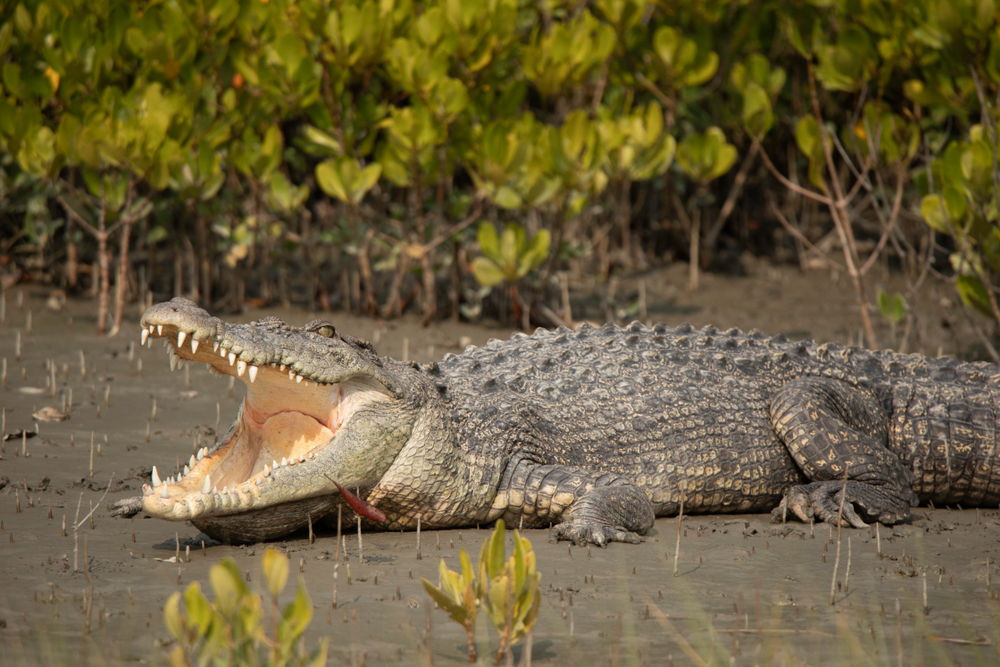
The Nile Crocodile is one of the most notorious predators in Africa, with a reputation for being quite aggressive towards people. These reptiles reside in sub-Saharan Africa and are known to attack humans who venture too close to their territory. Dr. Adam Britton, a renowned crocodile expert, notes that they can be particularly aggressive during the breeding season. Nile Crocodiles are opportunistic hunters, and their method of attack often involves ambushing unwary prey from the water. Their stealthy approach and powerful jaws make them a formidable threat to anyone crossing their path.
In regions where human populations live near crocodile habitats, conflicts are unfortunately common. Local communities often have traditional knowledge and strategies for minimizing encounters, such as avoiding certain areas at night when crocodiles are most active. However, as human populations expand, interactions with these reptiles are becoming more frequent. Understanding their behavior and respecting their space can help prevent tragic encounters. Despite their fearsome reputation, these animals play a crucial role in their ecosystems as apex predators.
2. Bengal Tiger
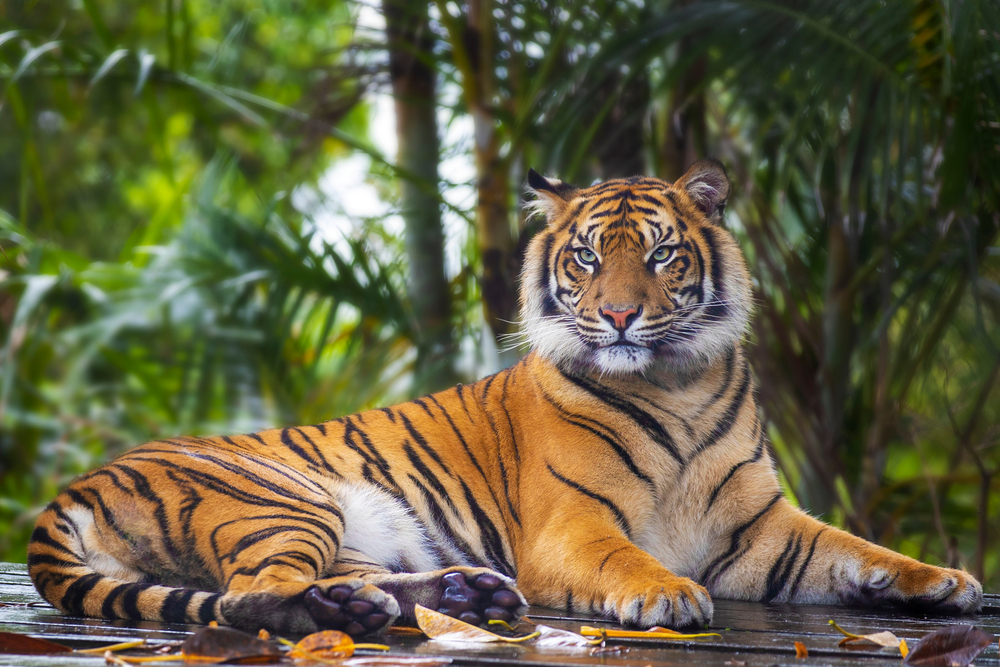
Bengal Tigers in India and Bangladesh are known to occasionally hunt people, particularly in the Sundarbans region. This area has a dense population of tigers and is notorious for tiger attacks on humans, sometimes leading to fatalities. Despite being solitary creatures, a Bengal Tiger’s territory can overlap with human settlements, leading to these dangerous encounters. The competition for space and resources is a driving factor in these incidents. As natural prey becomes scarce, tigers may turn to humans as an alternative food source.
Villagers living in tiger-prone areas have developed various methods to deter these big cats, including wearing masks on the back of their heads. The idea is that tigers prefer to attack from behind, and a face on the back of the head confuses them. Conservationists are working to address these conflicts by restoring prey populations and creating buffer zones between tigers and people. Ensuring tigers have enough natural habitat is also essential for reducing human-tiger conflicts. While the Bengal Tiger is an endangered species, ensuring they don’t view humans as prey is crucial for coexistence.
3. Great White Shark
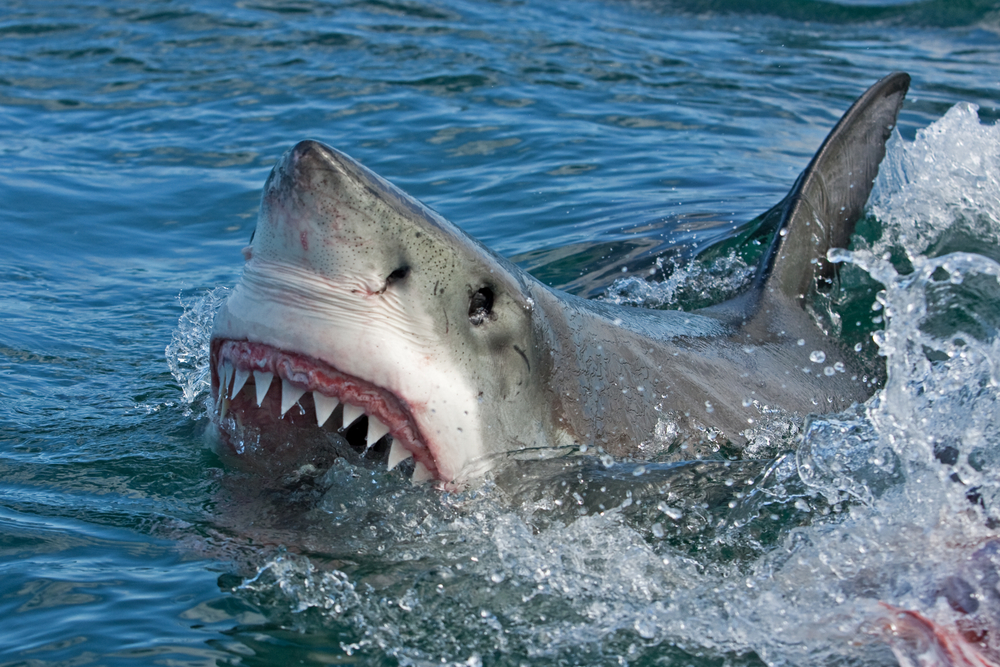
Great White Sharks are often portrayed as mindless killing machines, but the reality is more nuanced. They are apex predators that occasionally mistake humans for their usual prey, such as seals. According to marine biologist Dr. Alison Kock, the vast majority of shark attacks on humans are exploratory bites rather than predation. Great Whites are curious creatures, and their bites are often a means of investigating unfamiliar objects or creatures. While these bites can be fatal due to their size and power, attacks are rare and usually not deliberate.
Beachgoers and surfers should exercise caution in areas known for shark activity, especially during dawn and dusk when sharks are more active. Following local advisories and avoiding areas with high seal populations can reduce the risk of encountering these predators. Technology such as shark nets and aerial surveillance also plays a role in keeping people safe. Despite their fearsome reputation, Great White Sharks are vital to marine ecosystems, helping control populations of other marine animals. Efforts to protect them have increased, focusing on understanding their behavior to minimize human-shark interactions.
4. Polar Bear
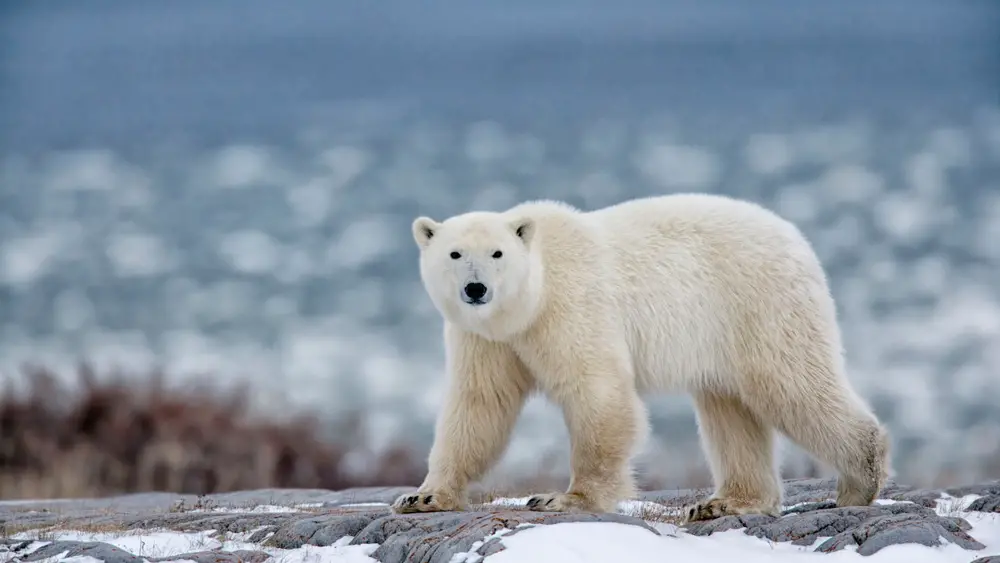
The Polar Bear is the largest terrestrial carnivore and has a reputation for being a fearsome predator. In the Arctic regions they call home, these bears are known to view people as potential prey, particularly when food is scarce. Adapted to the harsh conditions of the Arctic, Polar Bears are expert hunters, primarily feeding on seals. However, climate change has led to a reduction in sea ice, affecting their natural hunting grounds and leading them to venture closer to human settlements. This increased interaction has occasionally resulted in attacks on people.
Communities in the far north have developed practices to stay safe, such as using bear patrols and maintaining a safe distance from these powerful animals. Conservation efforts are focused on mitigating the impact of climate change to preserve their natural habitat and reduce human-bear encounters. Education and awareness are also critical components in reducing risks when living near these apex predators. Despite the challenges, Polar Bears are an iconic species that symbolize the impact of environmental changes on wildlife. Protecting them requires a balance between human safety and conservation efforts.
5. African Lion
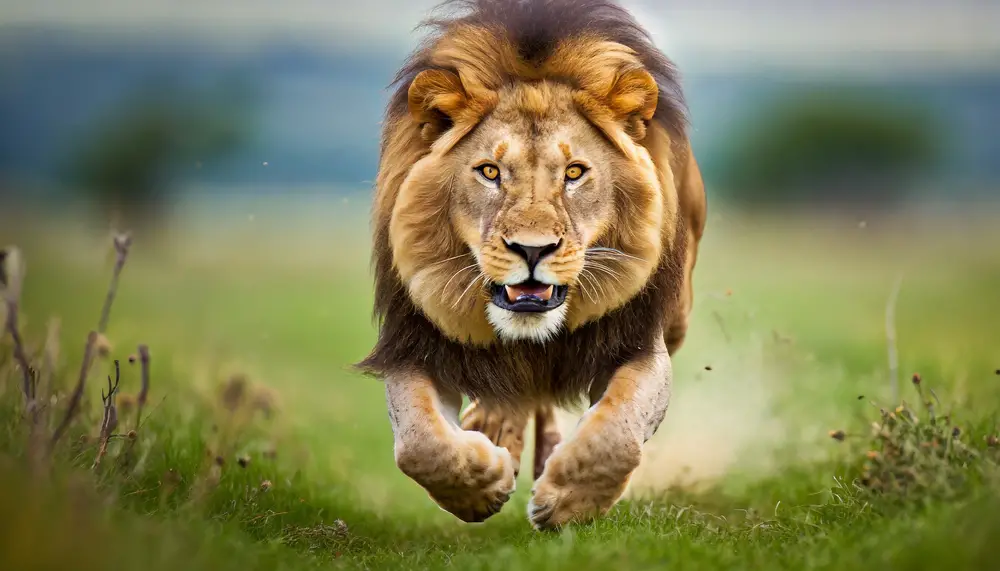
The African Lion, often called the “king of the jungle,” occasionally engages in human predation, particularly in regions where their natural prey has dwindled. Lions are social animals that rely on collaboration and teamwork to hunt, typically targeting large herbivores. However, when food is scarce, some lions turn to easier targets, including livestock and, unfortunately, people. Dr. Craig Packer, a leading lion researcher, has documented instances where lions have developed a taste for human flesh, often due to injuries that make hunting typical prey difficult. These man-eaters are usually older lions no longer able to compete with younger or healthier members of the pride.
In areas prone to lion attacks, communities have devised various strategies to protect themselves, including building lion-proof enclosures for livestock. Conservationists are working to restore prey populations and create protected areas that minimize human-lion conflict. Ensuring that lions have a sustainable environment is key to reducing their interactions with humans. While lions are iconic and majestic creatures, understanding their behavior and needs is critical for coexistence. Protecting these big cats is essential for maintaining the ecological balance of the savanna.
6. Komodo Dragon
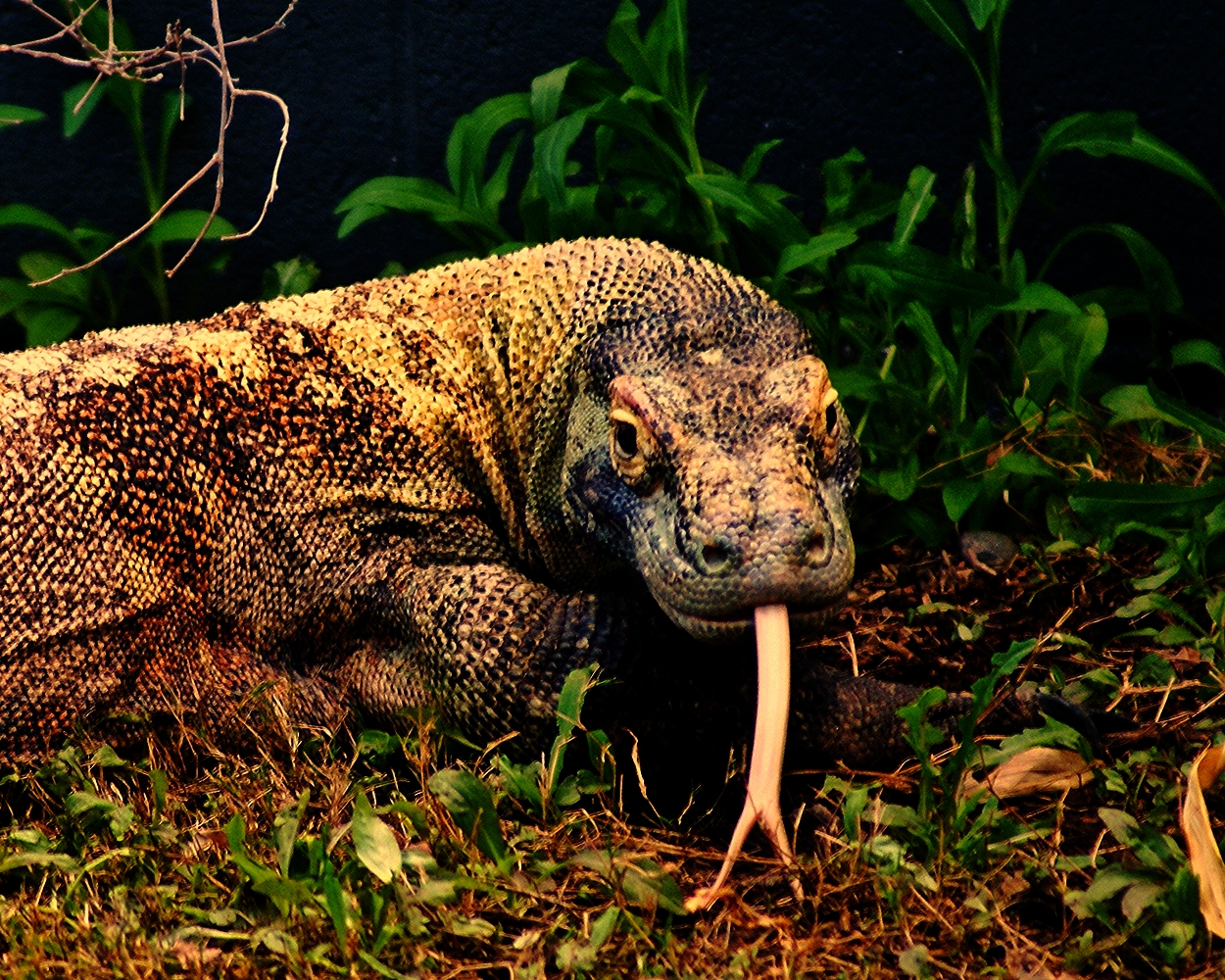
The Komodo Dragon, native to Indonesia, is a formidable reptile known for its size and strength. While not a common occurrence, there have been instances where these giant lizards have attacked people. Komodo Dragons have a potent bite, filled with bacteria and venom, making their attacks potentially deadly. They are primarily scavengers that feed on carrion, but they are also capable hunters, taking down large prey like deer and water buffalo. When food is scarce or their territory is encroached upon, they may see humans as an alternative food source.
The local populations on the islands where Komodo Dragons are found have learned to coexist with these creatures by giving them a wide berth and respecting their territory. Conservation efforts focus on preserving their natural habitat and prey, ensuring they don’t resort to hunting humans. Despite their fearsome reputation, Komodo Dragons are an important part of their ecosystem, acting as top predators and scavengers. Understanding their behavior and respecting their space is essential for preventing conflicts. As one of the world’s most fascinating reptiles, they continue to captivate scientists and wildlife enthusiasts alike.
7. Leopard
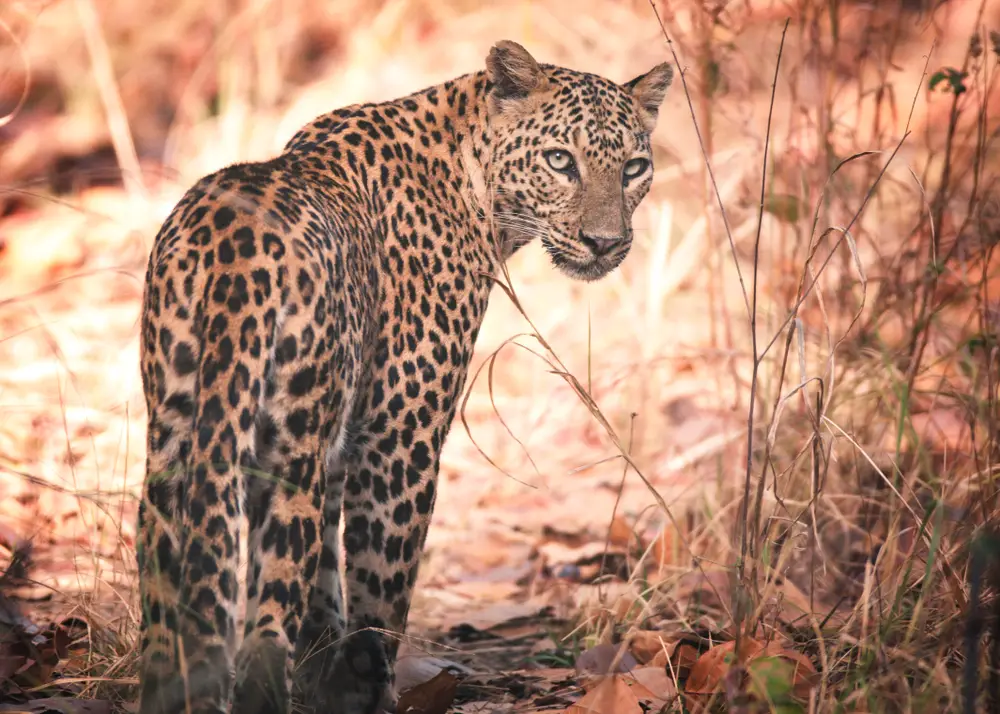
Leopards are adaptable and stealthy predators found in various habitats across Africa and Asia. While they typically hunt smaller mammals, leopards have been known to attack and kill humans, particularly in areas where their natural prey is scarce. Wildlife conservationist Dr. Vidya Athreya highlights that human-leopard conflicts often arise in regions where human encroachment leads to habitat loss. As leopards are nocturnal hunters, they can be particularly dangerous at night when visibility is low. Their ability to blend into their surroundings makes them difficult to spot until it’s too late.
Despite these risks, leopards are a vital part of their ecosystems, controlling populations of smaller mammals. Efforts to mitigate human-leopard conflicts focus on creating corridors that connect fragmented habitats, allowing leopards to roam freely without encountering humans. Education and awareness campaigns also play a role in reducing direct conflicts by informing people about leopard behavior and safety precautions. The beauty and power of leopards make them a symbol of wild majesty, but coexisting with them requires understanding and respecting their needs. As human populations grow, finding ways to share the landscape with these magnificent animals remains a priority.
8. Saltwater Crocodile
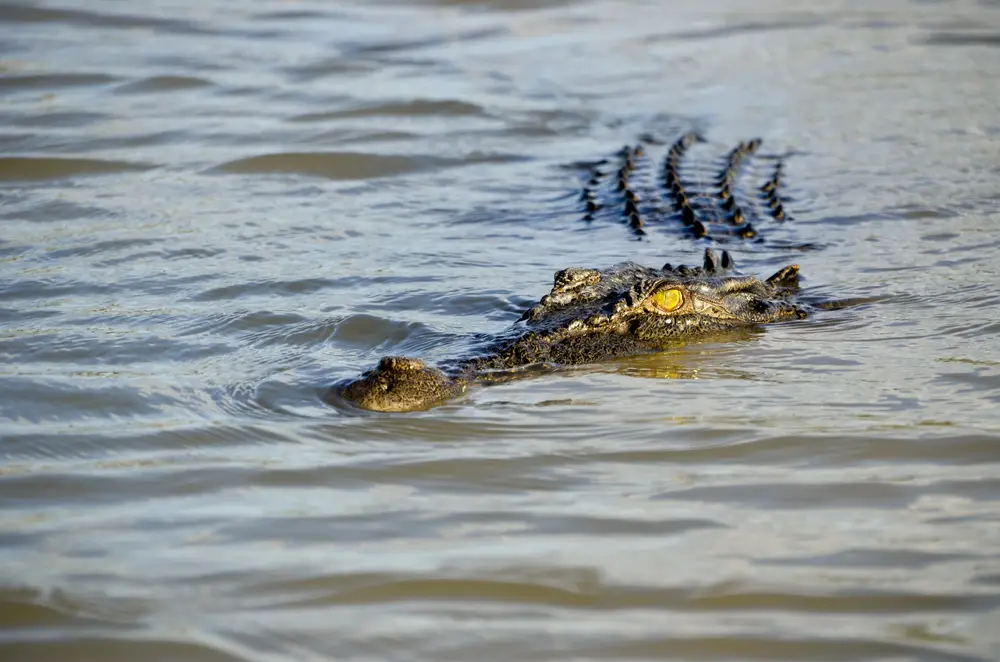
The Saltwater Crocodile, often called “Saltie,” is the largest living reptile and a formidable predator. Found in Southeast Asia and northern Australia, these crocodiles are known for their aggressive nature and powerful bite. Salties are opportunistic hunters and have been involved in numerous attacks on humans, often occurring in remote or rural areas where people may be less aware of the risks. They are ambush predators, lying in wait for unsuspecting prey to come to the water’s edge. Their ability to strike with incredible speed makes them a significant threat to anyone venturing into their territory.
Communities living near saltwater crocodile habitats have developed strategies to protect themselves, such as avoiding swimming in known crocodile-infested waters. Conservation efforts focus on preserving their habitats while minimizing human-crocodile interactions. Education on crocodile behavior and safety measures is crucial for preventing attacks. Despite their dangerous reputation, Saltwater Crocodiles play an essential role in their ecosystems as top predators. Understanding and respecting their space is vital for cohabiting with these ancient reptiles.
9. Hyenas

Hyenas are often misunderstood animals with a reputation for being cowardly scavengers, but they’re also skilled hunters. While they primarily feed on carrion, hyenas have been known to attack and kill humans, particularly in areas where their natural prey is scarce. Human-wildlife conflict often arises in regions where hyena habitats overlap with rural communities. Hyenas are intelligent and resourceful animals, able to adapt to changing environments and exploit opportunities for food. Their social structure and teamwork make them efficient hunters capable of taking down even large prey.
Communities living near hyena populations have learned to protect themselves by securing livestock and keeping a safe distance from these predators. Ensuring that hyenas have access to their natural prey is crucial for reducing human-hyena conflicts. Conservationists are working to preserve hyena habitats and educate people about their behavior and ecological importance. As a keystone species, hyenas help maintain the balance of their ecosystems by controlling herbivore populations. Understanding and respecting these intelligent creatures is vital for peaceful coexistence.
10. Pumas
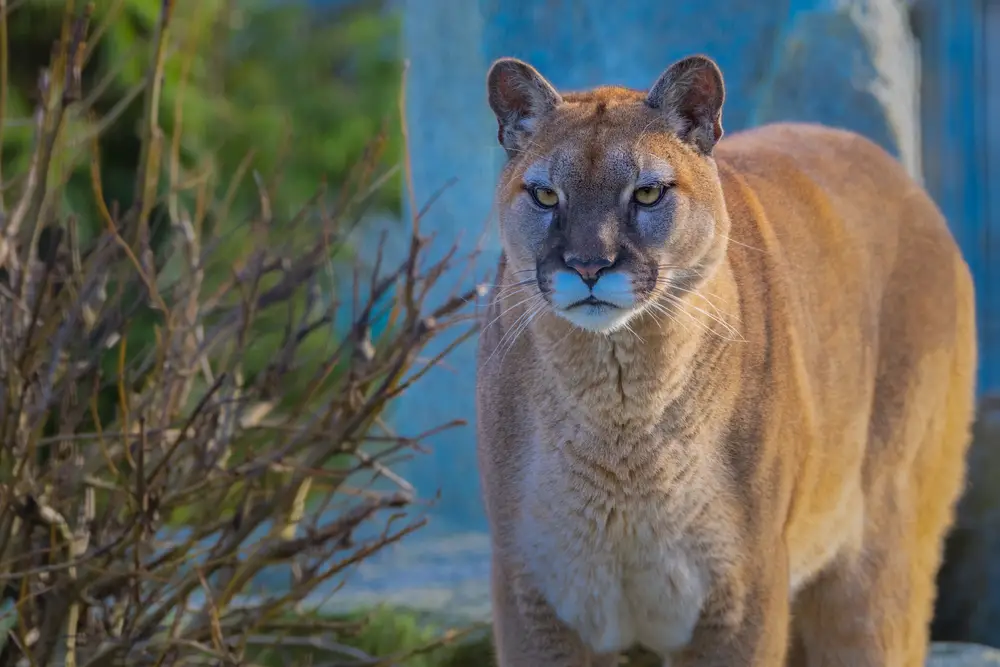
Pumas, also known as cougars or mountain lions, are solitary predators native to the Americas. While attacks on humans are rare, they do occur, especially in areas where human populations encroach on puma habitats. Pumas are ambush predators, relying on stealth and surprise to take down their prey, which can include deer and other large mammals. When they perceive humans as threats or easy targets due to their presence in their territory, conflicts can arise. As human development continues to expand into wild areas, encounters with pumas are becoming more frequent.
Communities in puma habitats have developed strategies to minimize conflicts, such as keeping pets indoors at night and installing motion-sensor lights to deter these big cats. Conservation efforts focus on preserving puma habitats and establishing wildlife corridors to allow them to roam without encountering humans. Education campaigns aim to inform people about puma behavior and safety precautions when living or recreating in areas where these animals are present. As apex predators, pumas play a crucial role in maintaining the ecological balance by controlling prey populations. Coexisting with them requires understanding their behavior and respecting their space.
11. Wolves
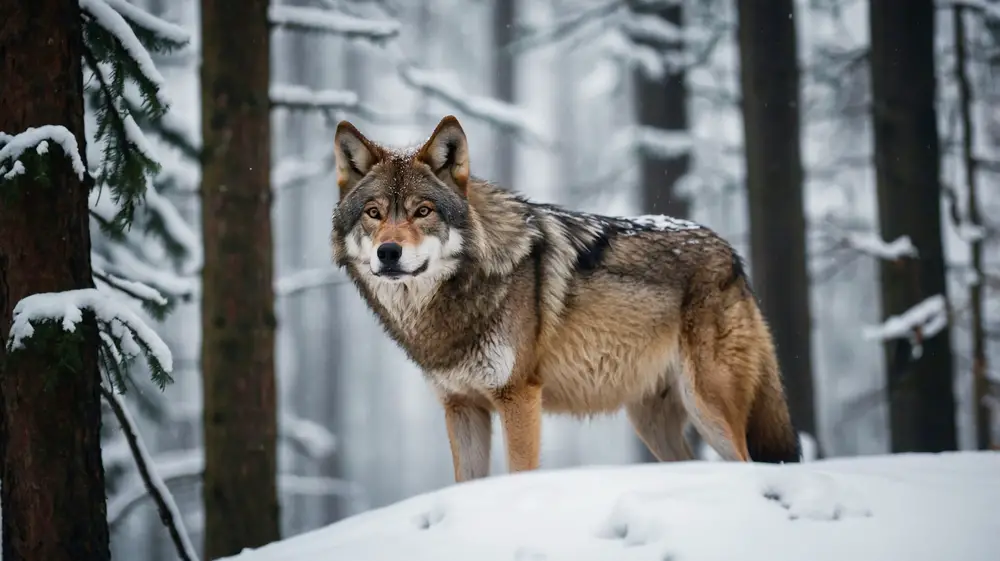
Wolves are social animals with a complex hierarchy and strong pack dynamics. While they primarily hunt wild ungulates, there have been rare instances of wolves attacking humans. Conflicts often arise in areas where wolf territories overlap with human settlements, leading to competition for resources. Wolves are intelligent and adaptable creatures capable of traveling long distances in search of food. When natural prey is scarce, they may turn to livestock and, in rare cases, humans.
Communities living near wolf populations have developed strategies to protect themselves and their livestock, such as using guard dogs and creating secure enclosures. Conservationists work to maintain healthy wolf populations while minimizing human-wolf conflicts through education and habitat preservation. Wolves are a keystone species, playing a vital role in maintaining the balance of their ecosystems by controlling prey populations. Understanding and respecting these intelligent animals is crucial for peaceful coexistence. Despite their fearsome reputation, wolves continue to fascinate and inspire with their social structure and hunting prowess.
12. Bears
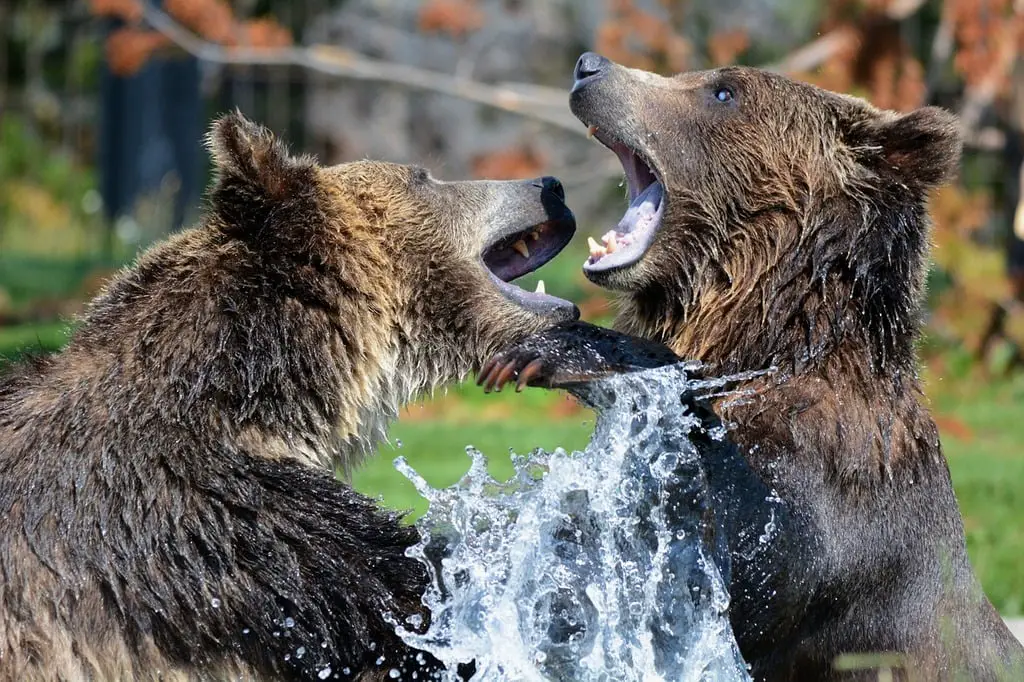
Bears are powerful and intelligent animals that generally prefer to avoid people but can become aggressive if they feel threatened or if human food is involved. In North America, species like the grizzly bear and black bear have been known to attack humans, particularly in areas where they’ve become habituated to human food sources. Bears have a keen sense of smell and can be attracted to campsites or homes if food is left unsecured. When bears lose their natural fear of humans, conflicts become more likely.
Communities in bear country have developed strategies to minimize conflicts, such as bear-proofing garbage cans and using proper food storage techniques while camping. Conservation efforts focus on preserving bear habitats and educating people about bear behavior and safety measures. Bears play a crucial role in their ecosystems by spreading seeds and controlling prey populations, making their conservation essential. Understanding their needs and respecting their space is vital for preventing human-bear conflicts. As charismatic megafauna, bears capture the imagination of many, but coexisting with them requires vigilance and respect.
13. Jaguars
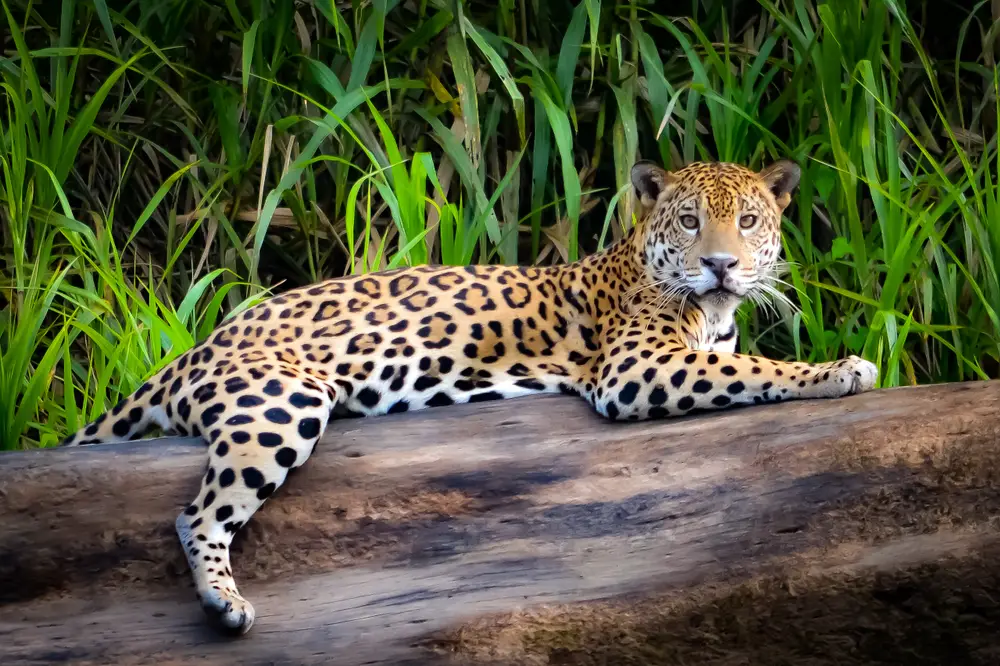
Jaguars are elusive and powerful predators native to the Americas, primarily inhabiting rainforests and dense jungles. While they rarely attack humans, there have been occasional incidents, particularly in areas where human activities encroach on their habitats. Jaguars are solitary animals that rely on stealth and strength to hunt their prey, which includes deer, capybaras, and caimans. As apex predators, they play a critical role in maintaining the health of their ecosystems by controlling prey populations.
Communities living near jaguar habitats have developed strategies to reduce conflicts, such as securing livestock and avoiding areas known for jaguar activity. Conservation efforts focus on preserving jaguar habitats and creating wildlife corridors to ensure these big cats can roam freely without encountering humans. Education campaigns aim to raise awareness about jaguar behavior and the importance of their conservation. Despite their elusive nature, jaguars are iconic symbols of the wild and continue to fascinate scientists and wildlife enthusiasts alike. Coexisting with them requires understanding and respecting their needs and behaviors.
14. Snakes
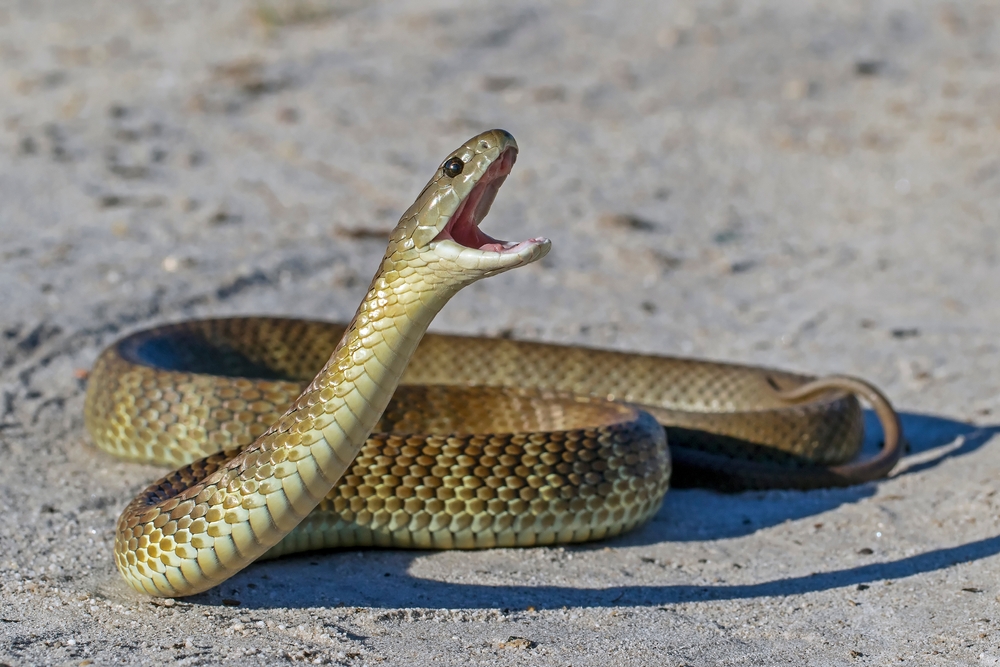
Snakes are generally not aggressive towards humans, but certain species, such as the king cobra and the coastal taipan, can be deadly if provoked. These reptiles primarily hunt smaller animals, and human encounters typically occur when snakes feel threatened or cornered. Venomous snakes have potent toxins that can be fatal if not treated promptly, making them a significant threat to humans in certain regions. Snakebite incidents are more common in rural areas where people may inadvertently disturb these reptiles.
Communities in snake-prone areas have developed strategies to reduce the risk of bites, such as wearing protective clothing and being cautious when walking through dense vegetation. Snake conservation efforts focus on educating people about the importance of these reptiles in controlling pest populations and maintaining ecological balance. Understanding snake behavior and respecting their space is crucial for preventing conflicts and ensuring human safety. Despite their fearsome reputation, snakes play a vital role in their ecosystems and contribute to biodiversity. Coexisting with them requires knowledge and respect for their role in the natural world.
